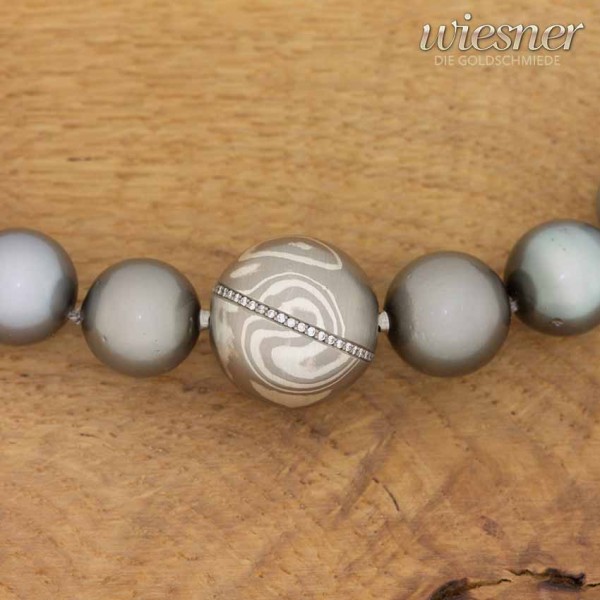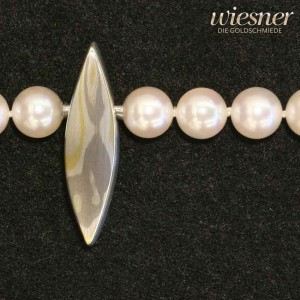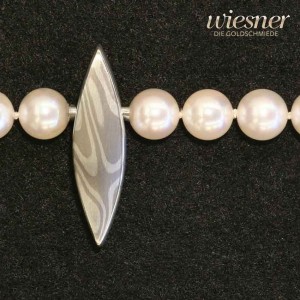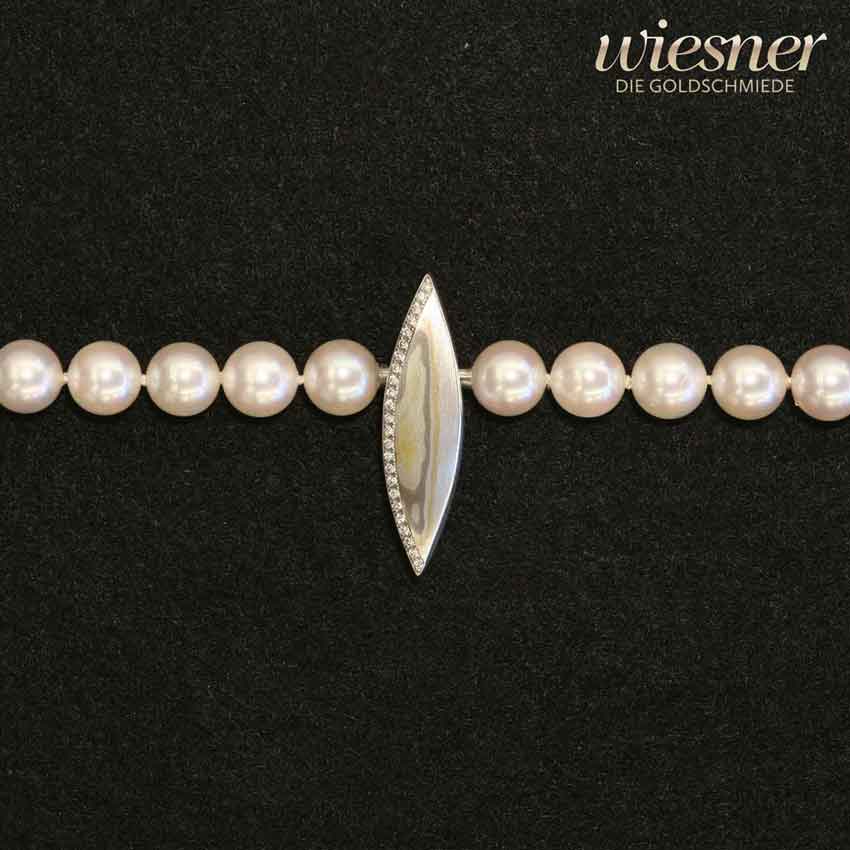The fascinating world of pearls
Introduction
Pearls have always been coveted pieces of jewelry that captivate with their natural beauty and elegance. These precious jewels are created in shells and have a fascinating history. In this article, we delve into the world of pearls and discover the different types of cultured pearls, their origins and unique characteristics.
Akoya pearls
Origin and creation:
Akoya pearls are classic cultured pearls that originated around 1900. These pearls are cultivated in saltwater mussels, particularly in the waters of Japan and China. During cultivation, a mother-of-pearl nucleus is implanted into the mussel, whereupon the mussel coats this foreign body with layers of mother-of-pearl. After around 3 to 4 years, a pearl with a nacre thickness of 0.8 to 1.2 mm has formed.
Properties and colors:
Akoya pearls are characterized by their mostly round shape, which is given by the insertion of mother-of-pearl spheres. They are available in various colors, including cream, gold, green-white and grey. However, the most expensive and sought-after color is white-rosé. Akoya pearls are cultivated in sizes up to 9 mm in diameter, with larger pearls being rare and therefore particularly valuable.
South Sea pearls
Origin and formation:
South Sea pearls are among the most expensive cultured pearls and are grown in the silver-lipped pearl oyster. These oysters are mainly found in the waters of the South Seas, particularly on the north coast of Australia. South Sea pearls are characterized by their impressive size and natural beauty.
Characteristics and colors:
The color of South Sea pearls varies from silver-gray to rose and gold to gray and black. These pearls are often cultivated in sizes over 10 mm, which makes them particularly rare and valuable. Due to their size and value, they are often processed as single pearls.
Keshi pearls
Origin and creation:
Keshi pearls are seedless saltwater cultured pearls that originate in Japanese waters as well as in the South Seas. These pearls are an accidental product of nature, as they are formed when implanted mother-of-pearl nuclei are shed by the mussel. The remaining particles are then encased in the shell's mantle.
Properties and colors:
Keshi pearls are characterized by their irregular, often bizarre shapes. They come in delicate natural colors such as grey, white, rose and gold. Each Keshi pearl is unique and has an individual shape, which makes them particularly attractive pieces of jewelry.
Freshwater pearls
Origin and creation:
Freshwater pearls are cultivated in freshwater mussels, particularly in China. They are cultivated in the Biwa pearl mussel, a relative of the well-known Biwa pearl from Japan. Due to environmental pollution, cultivation in Lake Biwa has no longer been possible since the 1980s, which is why most freshwater pearls now come from China.
Properties and colors:
Freshwater pearls are available in a variety of shapes and colors. They come in delicate natural colors such as white-rose, salmon-orange, golden-brown and grey. In addition to the seedless freshwater pearls, there are also those with a core, which are cultivated in sizes over 8 mm.
A wonderful example of a Freshwater pearls Necklace with a jewelry clasp.
All in all...
Pearls fascinate with their natural beauty and diversity. Whether Akoya, South Sea, Keshi or freshwater pearls - each type has its own unique characteristics and stories. Pearls are not only valuable pieces of jewelry, but also an expression of elegance and timeless beauty.










